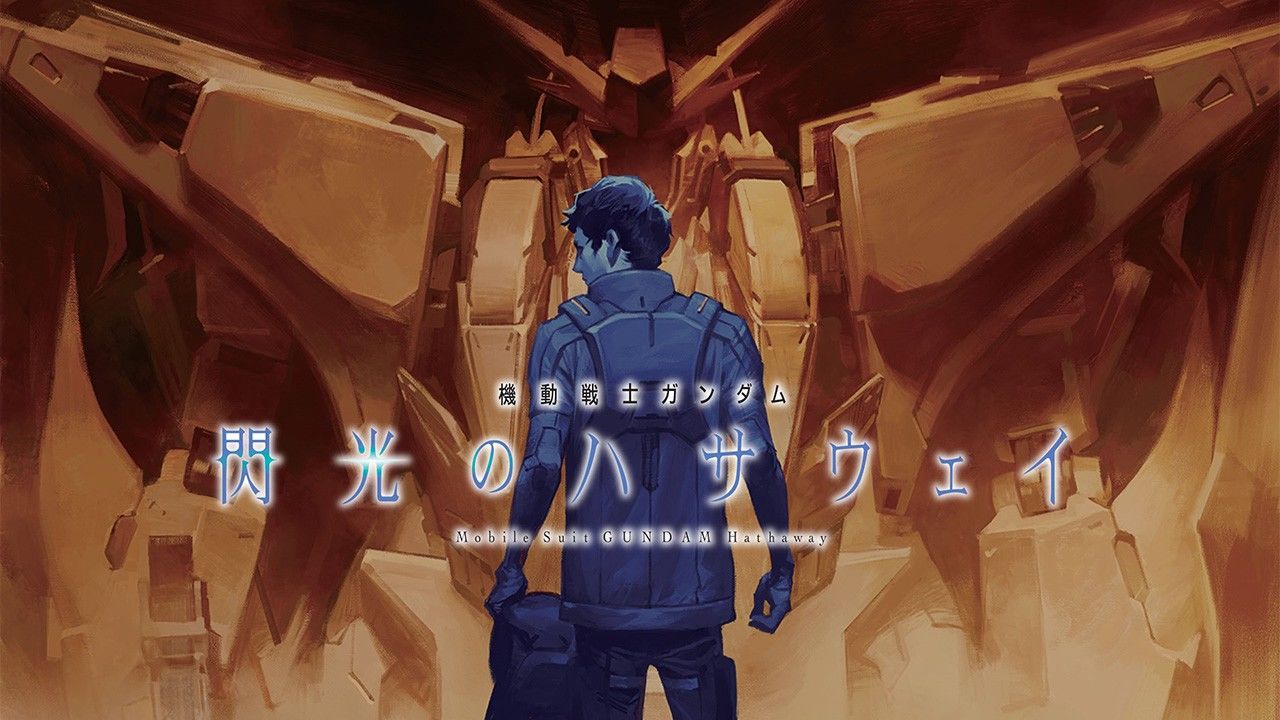
“Hathaway” Continues Director Tomino Yoshiyuki’s Gundam Saga
Anime Society- English
- 日本語
- 简体字
- 繁體字
- Français
- Español
- العربية
- Русский
The Enduring Gundam Worldview
Mobile Suit Gundam: Hathaway made its theatrical release in Japan and at the Shanghai International Film Festival on June 11. It is based on a novel that first appeared in 1989, and the trilogy it kicked off has sold 1.3 million copies so far. It has taken over 30 years for the novel to be adapted for the big screen. What keeps this story relevant? Or, to put it another way, why has Gundam remained popular for so long?
Mobile Suit Gundam debuted as an animated television series in 1979. It was set in something called the Universal Century, a future time when humanity has colonized outer space. The story revolved around the war by Principality of Zeon, a space colony, to win independence from the Earth Federation government. The main character, Amuro Ray, is swept up in the conflict and ends up joining the Earth Federation military. He becomes the pilot of a Mobile Suit (the term used in the series for giant human-shaped robot weapons) called Gundam, and joins the fight against Zeon.
One of the most novel elements of the work is its worldview. When it first debuted, animation was still primarily made for children, with a consistently clear distinction between good and evil. Naturally, the hero’s side was good, while the enemy was evil. In Mobile Suit Gundam, though, the Earth Federation is not so obviously “good,” since it refuses to acknowledge the independence of the outer space colonies. On the other hand, the spacefarers attempt the inhuman tactic of dropping an entire orbital colony on Earth.
While the adults in charge drive this war based on their own ideas of right and wrong, the youth are forced to fight just to keep themselves, and those around them, alive. This is the conflict at the heart of the first Mobile Suit Gundam series.
The work was innovative, but it failed to find an audience at first, and its run ended earlier than planned. However, it continued to gather fans even after cancellation, and its popularity exploded with the release of Gundam plastic models. Later, a trilogy of films reached theaters, and Gundam became a massive phenomenon that reached the status of a shared generational experience.
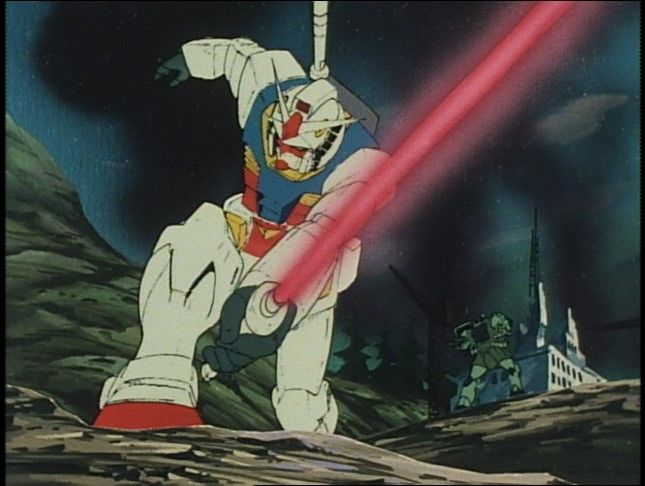
Gundam, naive young Amuro Ray’s beloved Mobile Suit in the original Mobile Suit Gundam series.
Its social position, in terms of its influence on the adolescents and young adults of the time as well as the enduring love they feel for it, is similar to that of George Lucas’s original 1977–83 Star Wars trilogy. Many of its famous scenes are still referenced and given homage in modern works. Just as Darth Vader’s line “I am your father!” has reached immortality in the minds of fans, many lines from the Gundam franchise see near daily use, like Oyaji ni mo butareta koto nai no ni! “Even my dad never hit me!” or Ore o fumidai ni shita! “He used me as a springboard!” There was even a recent hit business book called Shā ni manabu “gyakkyō” ni katsu shigotojutsu (Char Aznable’s Lessons on Business Techniques to Overcome Adversity), based on the main character’s chief rival.
The Star Wars universe continues to see new releases, and so does Mobile Suit Gundam. Hathaway is the latest official installment, and not only does it take place in the same Universal Century as the original work, it inherits the same worldview and many of the characters of the original. It is even based on novels written by the series’ original creator, Tomino Yoshiyuki.
A Creative Career Starting at Mushi Productions
Tomino was born in 1941. That also happens to be the same year another titan of animation was born in Tokyo: Miyazaki Hayao.
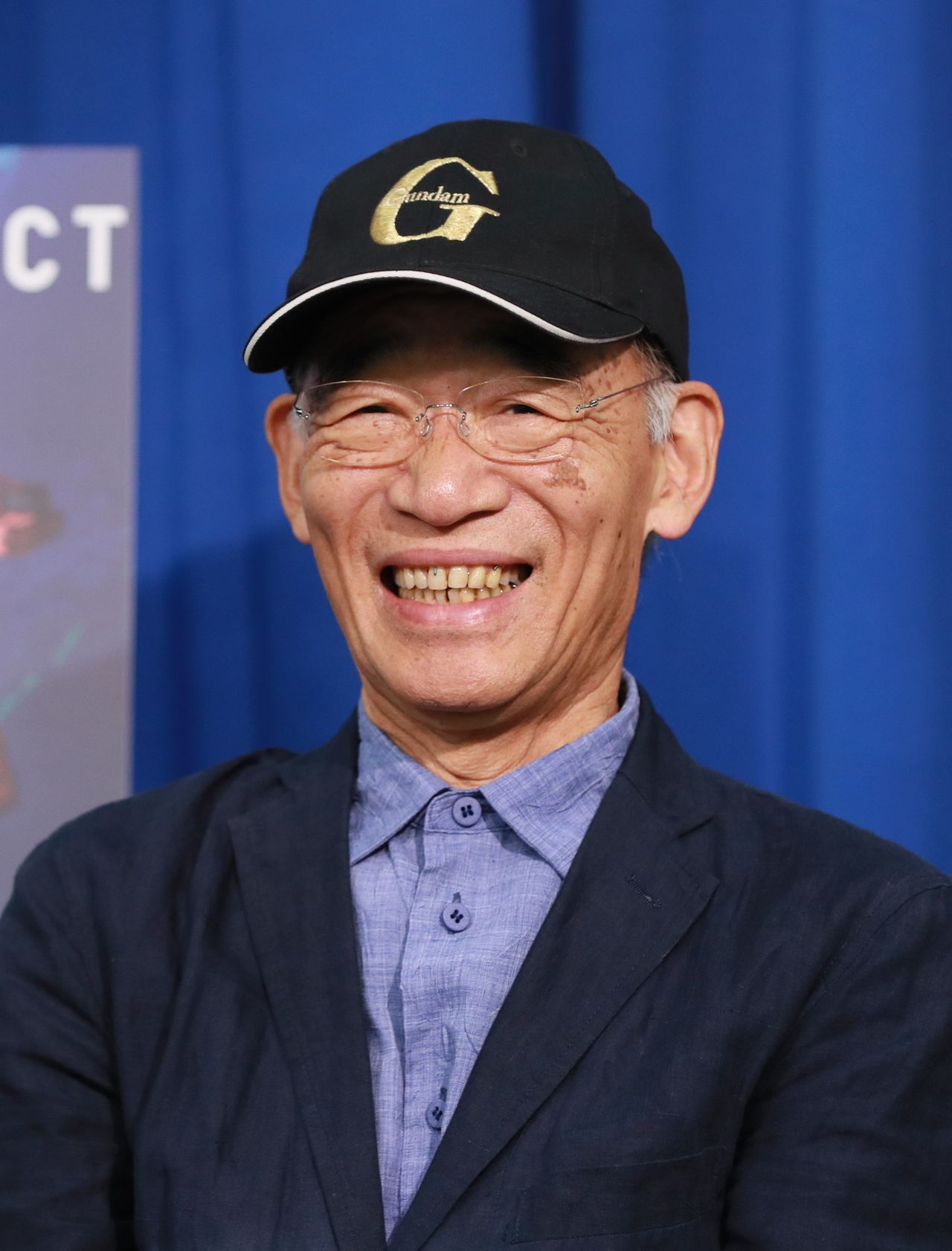
Tomino will celebrate his eightieth birthday this November. An exhibit of his work and perspective, Tomino Yoshiyuki no sekai (The World of Tomino Yoshiyuki), has toured Japan since 2019. The next appearance will be at the Niitsu Art Museum in Niigata Prefecture from September 4. (© Jiji)
Tomino studied filmmaking at university, then joined “God of Manga” Tezuka Osamu’s Mushi Production animation studio in 1964. That was the only year the company ever hired students before they graduated.
Tomino first worked as a production assistant. According to his autobiography Dakara boku wa . . . Gandamu e no michi (And so I . . . The Road to Gundam), what he actually did was courier work, like gathering and transporting completed scenarios, storyboards, and original drawings. But within his first six months as PA, a storyboard he drew for Tetsuwan Atomu (Astro Boy) caught Tezuka’s eye, and Tomino was promoted to episode director. After he was transferred to the directorial division, he became the primary episode director for the Astro Boy TV series.
He later went freelance, but in his day Tomino earned such a reputation for energy that people said he was “aiming to finish a thousand storyboards.” Finally, his first chance at overall direction came with the 1972 series Umi no Toriton (Triton of the Sea).
There is a saying in the creative world that “the debut holds everything,” and that could be said of the film industry, as well. Triton of the Sea is Tomino’s directorial debut, and many of the elements that later appeared in Gundam are clearly present.
Tomino himself said of Triton, “My basic way of thinking was the same as in Gundam. It really is the Gundam Doctrine.” What, then, stands at the heart of that doctrine? In his Dakara boku wa . . . Tomino writes, “What exactly is ‘evil?’ It all depends on the perspective of the individual. And on fate.”
Triton of the Sea is about a boy from the undersea Triton tribe, which was wiped out by the violent Poseidon tribe, and the war he wages on them. The main character fights for vengeance and to bring peace, which at first seems like a just cause, but in the end he comes to doubt his motives and realizes he might have been wrong all along.
Thus, evil is a matter of perspective. Of course, that means good is the same, and so values can change with time or perspective. Tomino did not offer a story about absolute good, focusing rather on one boy’s struggle to survive even as he wrestles with self-doubt. Even when making a story for children, Tomino took his subject seriously and refused to compromise his vision. That is the same approach he took in Gundam, and is one of the reasons that his work remains fresh even after all these years.
An Interstellar War Between Humanity
After Mobile Suit Gundam exploded in popularity, a follow-up series, Kidō senshi zēta Gandamu (Mobile Suit Zeta Gundam), was released in 1985.
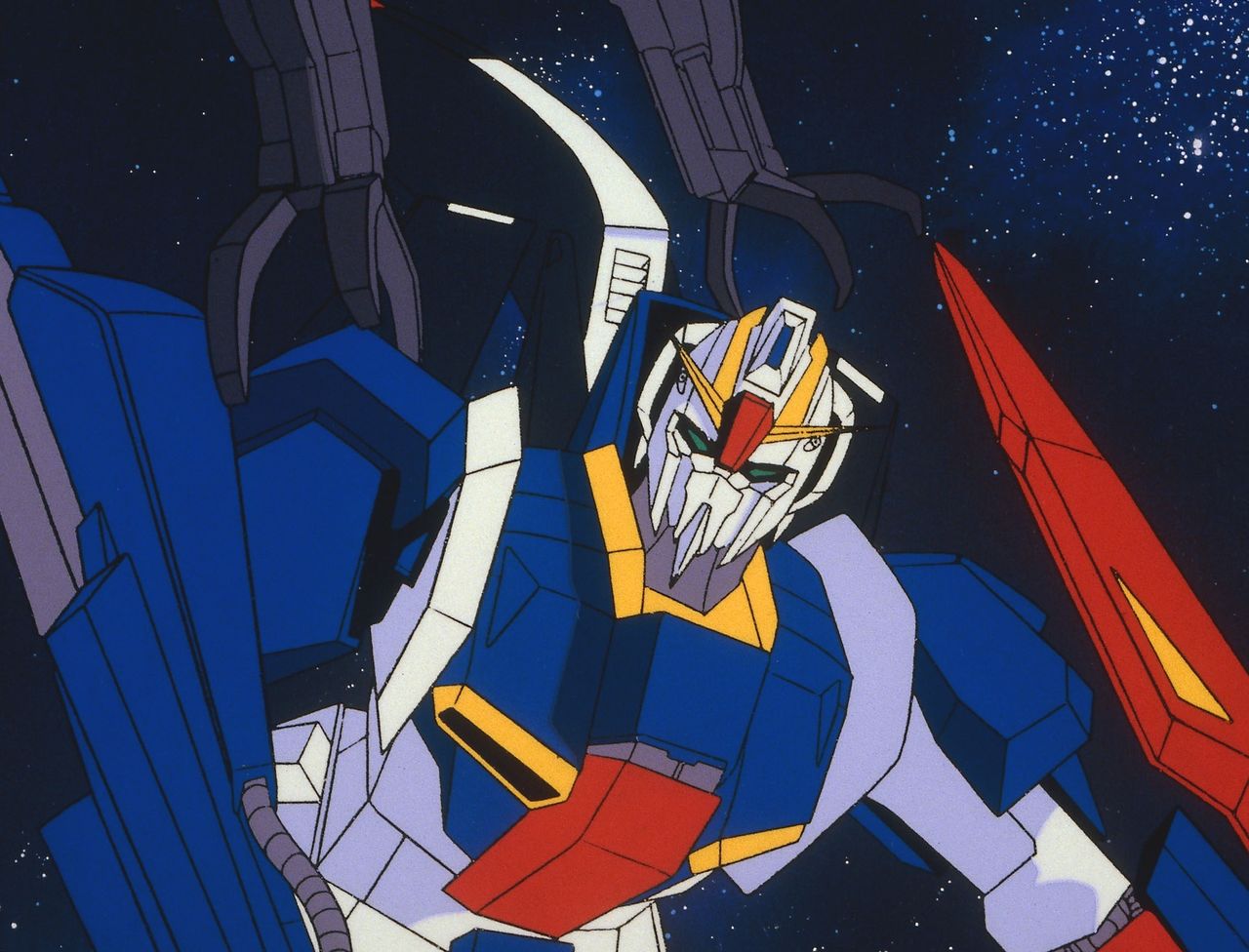
Mobile Suit Zeta Gundam was set seven years after the first work. The main character, Kamille Bidan, went into battle piloting the newly developed Zeta Gundam.
The Earth Federation Forces had won the war. However, the issue of autonomy for the space colonies remained unresolved, and the supposedly victorious EFF faced a growing division between liberals and far-right groups, leading to a civil war. In modern terms, this would be like an internal conflict between moderates and hardliners over immigration policy. As the American political scientist Joseph Nye observes in Understanding International Conflicts, “Hard-liners reinforce each other.” When extremists arise on opposite sides of an issue, they form “a de facto transnational coalition”—and indeed, in this series, a far-right group within the EFF actually did try to form an alliance with remnants of the Zeon military.
Then, in the 1989 film Kidō senshi Gandamu: Gyakushū no Shā (Mobile Suit Gundam: Char’s Counterattack), the remnants of the Principality of Zeon attempt to break the cycle of hatred and war at its root by dropping an asteroid on Earth to force all humans to emigrate to space.
The conflict in that work had become asymmetrical warfare between state and nonstate organizations. The United States first turned its attention to this new form of conflict some time after the collapse of the Soviet Union and concurrent end of the Cold War in 1989, so Gundam anticipated real events by a large margin.
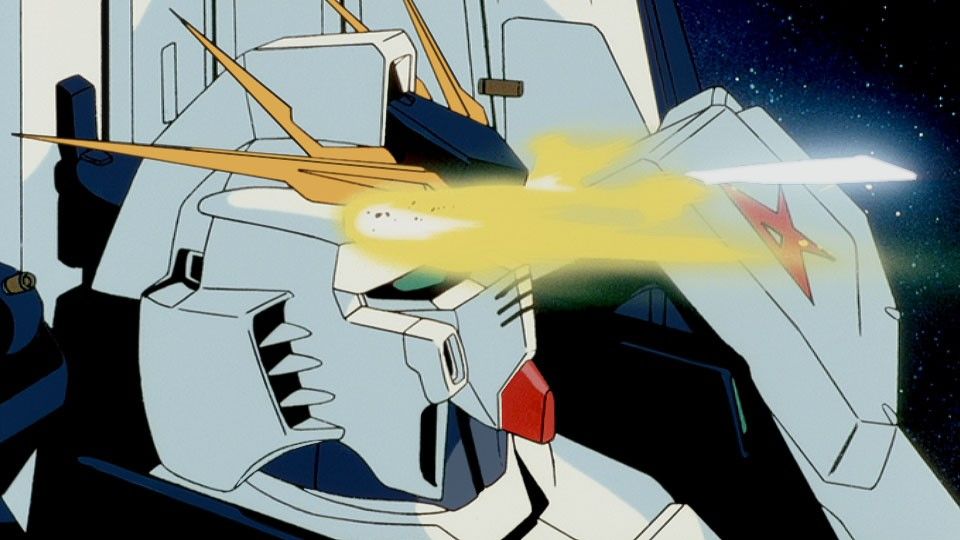
Char’s Counterattack was set 14 years after the first work. Amuro takes the battle back to his arch enemy Char in the ν (nu) Gundam.
Hathaway is set a further 12 years after Char’s Counterattack. All of the conflict has failed to make the world any better. Earth’s environment continues to deteriorate through global warming, and only the elites inside the Federation system are free to move as they please. The overwhelming majority, the outsiders, are forced out into space. The children of the rich stay rich, and the children of the poor stay poor. Social disparities become fixed, and individuals no longer have the power to control their own fates. It is a society in which the only strength belongs to the inhumane system. To bring down that system, the main character, Hathaway Noa, finds himself forced to join up with a violent anti-EFF movement. Even knowing that their methods are wrong, he still pilots the latest Mobile Suit, the Ξ (xi) Gundam, against the Federation government.
In the real world, history has begun to diverge from the Gundam world, and war is now something fought with drones and information. In the Nagorno-Karabakh war of 2020, for example, Azerbaijani forces deployed inexpensive commercially available drones and suicide bombers to defeat the Armenian army. However, this still does not mean that the story of Hathaway, written over 30 years ago, is out of touch with the times. The idea of a society locked in despair because of a fixed class structure carries an ominous hint toward our own possible future.
Just as our real world grows more complicated, the world of the story becomes intricately interwoven in a mosaic of good and evil, where there is no easy way to tell right from wrong. However, with the new film version, Hathaway’s war is likely to raise new questions about our own society.
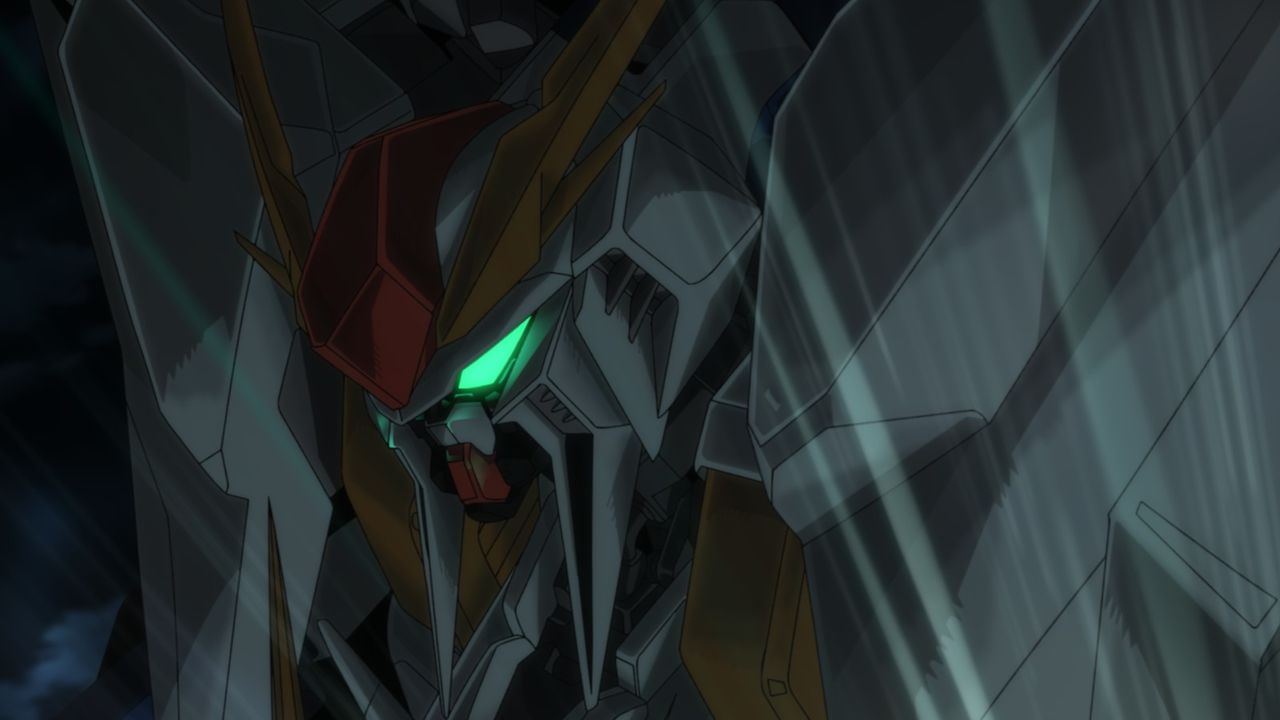
The lead character of Hathaway, Mafty Navue Erin (Hathaway Noa), pilots the latest Gundam, a model finally capable of solo atmospheric maneuvers.
Elevating Robot Anime to Art
Miyazaki Hayao and Tomino Yoshiyuki are contemporaries. However, while Miyazaki came out of Tōei Animation, one of the most prestigious animation production companies in Japan, Tomino’s employer Mushi Production actually used a business model based on covering production costs by commercializing the characters in their works.
However, that model that can easily lead to a reversal of priorities, in which the animation’s primary job is to sell goods. Indeed, Tomino’s key genre of giant robot animation had gained a derisive reputation in the industry as “toy commercial films.”
I once held an in-depth interview with the Gundam creators, and they all talked frankly about the extensive condescension they received. They said, though, that it encouraged them to work all the harder to show their detractors how wrong they were.
One admirable thing about Tomino is that even in the face of criticism, he did not bow to his detractors and avoid commercialization. In fact, it became the basis for his robot designs, even as he wove sincere human drama around them. He broke new ground, achieving an unprecedented balance between two often contradictory poles: the fun and the profound.
Tomino’s work has had an enormous influence on later creators. For example, Anno Hideaki, the director of Neon Genesis Evangelion, wrote his own book to examine the appeal of Char’s Counterattack.
In the modern world, the entertainment business has become a tremendous concentration of money and talent. That sector’s development has followed the path Tomino blazed, pursuing both commercial success and artistic expression. It seems only natural for those creators who came after to hold him in such high regard.
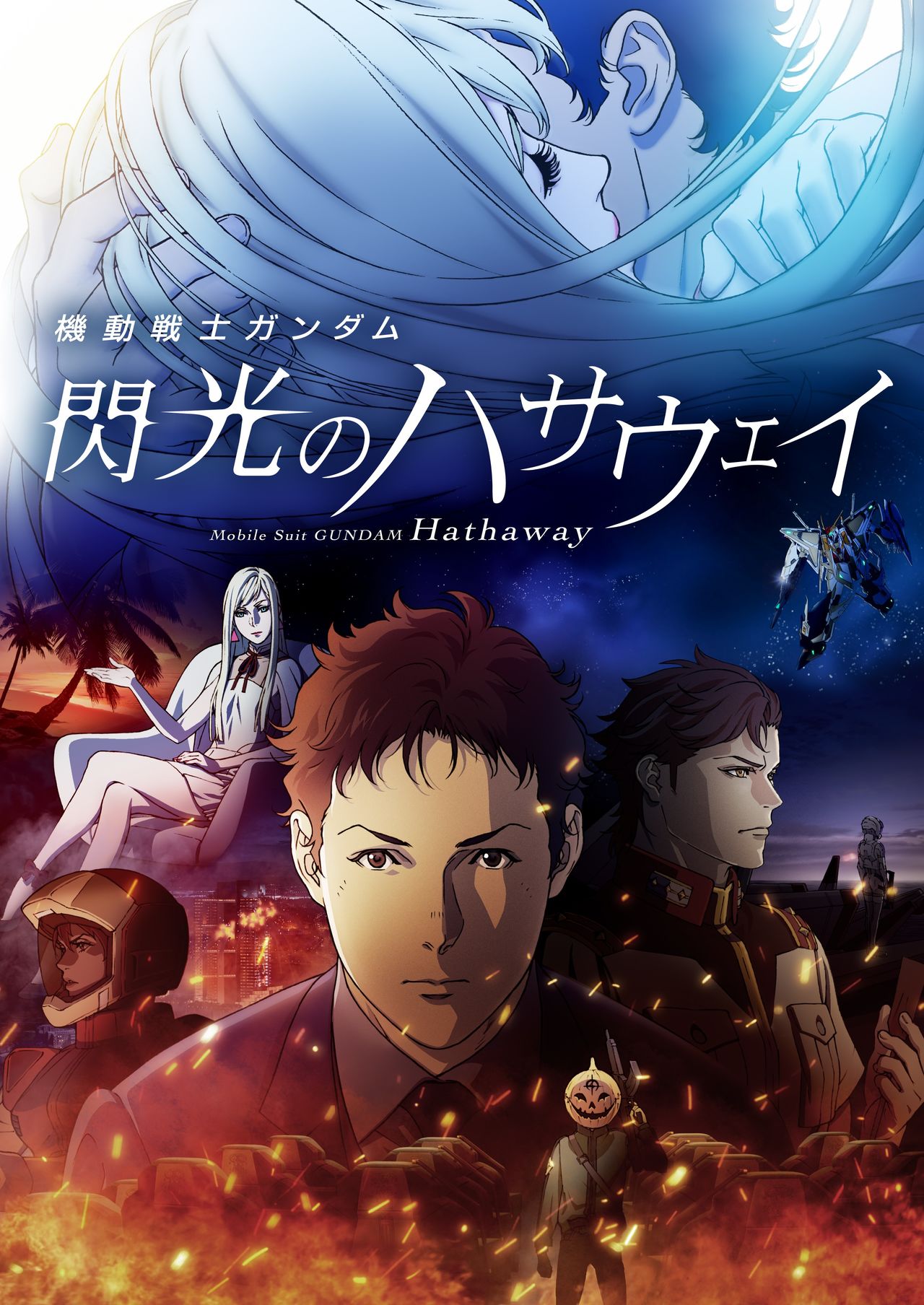
After two postponements, Mobile Suit Gundam: Hathaway was released nationwide in Japan on June 11. The lack of emphasis on the mobile suits in the advertising speaks to the way the film has passed beyond mere robot anime.
The first part of the movie (in Japanese) can be viewed on the official YouTube Gundam Channel.
(Originally published in Japanese. Banner picture: The initial teaser image for Mobile Suit Gundam: Hathaway. All images © Sōtsu/Sunrise unless otherwise noted.)